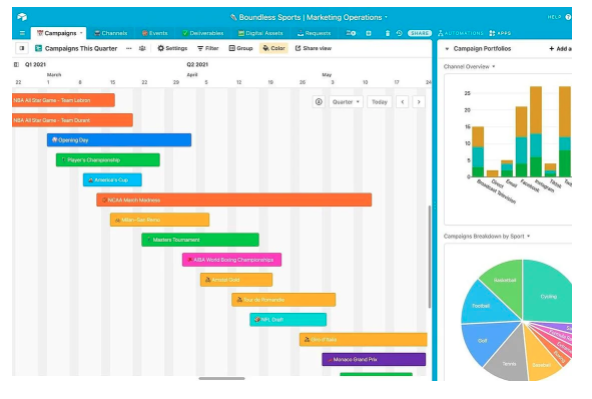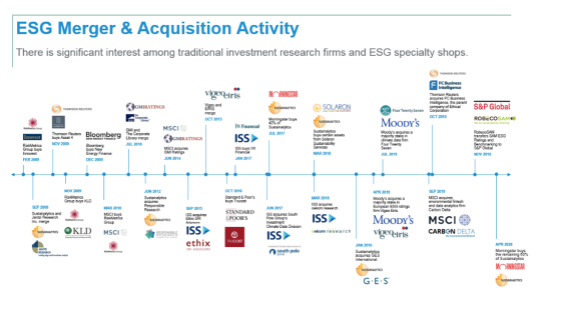
For some time, I’ve been looking for one “source” that curates modern takes on HR Tech, perspectives from the people who build it, and its impact on enterprise — something that’s tailor-made by professionals for decision-makers.
I never found it — so I decided to build it.
Every week, I’ll be sharing fresh insights on tech platforms, design, data, and the future of work — straight to your inbox.
My Thoughts
Cancer is the second leading cause of death worldwide, and it remains one of the most significant areas of research in healthcare worldwide. Here are 13 technologies that are shaping the future of cancer care — from mRNA, to molecular cancer diagnostics that match patients to targeted therapies based on their specific cases, to AI-based therapy design. 🤖 💪 🔥 Developing COVID-19 vaccines at speed demonstrated what mRNA can do against new viruses as well as existing ones like HIV— and we’ve barely scratched the surface. This past year also showed what R&D can do with the right investment. Oncological research is building on this momentum — and we should all be paying attention. 🏥 💊 👏
Tech Innovation at Work
CNBC has released its Disruptor 50 list — the private companies leading the way with strong business models and growth rates and rapid technological innovation. 🔥 📈 🏄 Companies on this year’s list are from a variety of industries, from financial services to health care, biotech, education, food, media, agriculture and transportation. 34 are unicorns that have reached the $1 billion valuation mark. 10 of the companies on this year’s list are worth at least $10 billion. The top 10 include: Robinhood, Stripe, Discord, SentinelOne, Didi Chuxing, Brex, Marqueta, Chime, TytoCare, and ElevateBio.📱 💸
If you haven’t heard of it yet — here’s a product worth checking out. The HR startup Humu uses “nudges” from behavioral science to improve the transition to hybrid work. 👉🌟 Humu “sends personalized, customized nudges to different members of a team at different times and in different combinations that actually change behavior,” says Laszlo Bock, the company’s co-founder and CEO, and the former head of people at Google.
Retailers are increasingly introducing e-concessions and e-consignments — and the marketplace model is rapidly becoming an industry favorite. With companies like Farfetch leading the way, many — Nordstrom, Net-a-Porter, Saks— are switching from wholesale to a hybrid model, where they hold some inventory from brands while also mixing it with e-concessions. 🛍️ 👠 💫 This way, brands retain more control over how their products are sold and retailers also reduce their risk and increase product assortment. Underlying all this is an increasingly competitive market. Heightened customer expectations have put pressure on retailers to improve their performance. 💳 📱 Steve Dennis, a retail consultant and former SVP of strategy at Neiman Marcus, says: “It’s hard enough to get people to your website, but if customers come to your site and they still don’t buy, it might be because you don’t have what they want. If retailers can increase conversion just a little bit, that still goes to the bottom line. With concessions, they don’t have to bear the cost of a larger inventory.”

Bank of America CEO Brian Moynihan said that the company has ramped its cybersecurity spending to over $1 billion a year — and they’re not alone. 🏦 💴 🔒 Many companies took the pandemic as an opportunity to update their cybersecurity programs. Last month, President Joe Biden also signed an executive order aimed at strengthening U.S. cybersecurity defenses. Improving cybersecurity is a question of years, not months, and this will continue to be a sector to watch.
Here’s an interesting thing to note according to cloudwars.co. Salesforce co-founder Parker Harris, while extolling the virtues of Slack and eagerly anticipating the completion of that proposed acquisition, described Slack as “human workflow” during a Q&A session at an investors conference. 🤔 ➡️ ☁️ Is this a reference to ServiceNow and its “digital workflow”concept? Does Salesforce have plans to move in on the space ServiceNow has carved for itself? Are we expecting Salesforce/Slack’s “human workflow” to collide head-on with ServiceNow’s “digital workflow”?
The Changing Workplace
Companies should brace for a turnover “tsunami.” According to research shared by SHRM, 25% of employees plan to quit their jobs once the COVID-19 pandemic subsides and recruiting efforts ramp up. 😮❗✈️ According to a survey by the Achievers Workforce Institute:
- 46% of respondents feel less connected to their companies.
- 42% say company culture has diminished since the start of the pandemic.
- Just 21% of respondents say they are very engaged and planning to stay with their company for a long time.
A key part of retaining talent and winning the war for talent will be creating a holistic employee experience that is engaging, that prioritizes employee wellness and well-being, drives belonging and inclusivity, surfaces aspirations for rewards and recognition, and guides people through their unique career paths.
Deborah Kaplan, deputy director of programmatic access at the San Francisco Mayor’s Office on Disability, spoke to the Wall Street Journal about making technology accessible to everyone. Kaplan notes that companies often mistake accessibility for accommodating individuals. But often, it’s a question of designing technology and products — software, infrastructure, tools — with different needs in mind from the start. 👨💻 ✊ ⚒️ She puts it this way: “Think of it like designing a building. If you don’t start at the very earliest point trying to make it accessible—there’s no elevator, for example, or you don’t put in ramps—it will be a lot less functional from the beginning and a lot more expensive to retrofit. On the other hand, if you design these things into the blueprints, the building will be more economical and useful from the get-go. The same is true with technology. If you don’t design it with broad accessibility in mind from the very beginning… it’s going to be more expensive and disruptive to make patchwork fixes later on, and the solution isn’t likely to work as well.”
In case you needed any more proof that hybrid work is taking off— tech talent at big-name Silicon Valley companies are moving to startups that create products for hybrid work. Airtable, for instance, has added some 13,000 new paid customers to its platform. 🏡 📊 💡Sarah Cannon, a partner at Index Ventures, said she knows of at least a dozen recent communication and collaboration startups founded or led by former top people at big tech firms. Gartner estimates 60% of global companies are developing a permanent hybrid workplace model where most employees come into the office no more than three days a week. More than 1.1 billion workers around the world worked remotely last year, up from 350 million in 2019.

All About Data
We’ve been hearing a lot about ESG (environmental, social, and corporate governance) — but for investors, ESG metrics are not the whole story. 🌲 🌎 🚲 Companies have complained about a lack of transparency and comparability between methodologies, a lack of contextual understanding or expertise on the part of ratings analysts, and a lack of responsiveness when inaccuracies are identified. But investors know the story doesn’t stop there — ESG watchers are doing their research with media and NGO reports, regulatory databases, anonymous employee reviews, climate risk maps and even satellite data. 🔥 👩💻 🔍
- According to Edelman, over 90% of US investors say they are “likely” to engage with boards during the 2021 season on ESG aspects, including climate risk, resource scarcity, human capital management, employee health & safety and diversity & inclusion.
- According to a 2020 survey of asset managers by Russell Investments: The most frequent sources of ESG information were identified as direct engagement with companies (77%), followed by company reporting (71%) and then by external ESG research vendors (63%).
For companies, the lesson is clear — attend to your ESG ratings, but also ensure that you have a compelling story to tell about how ESG considerations are embedded in your strategy, and equip your investor relations team to tell it. 💪🎙️

Click here to subscribe to Exit Interview, a weekly email about tech platforms, design, data, and the future of work — straight to your inbox.

